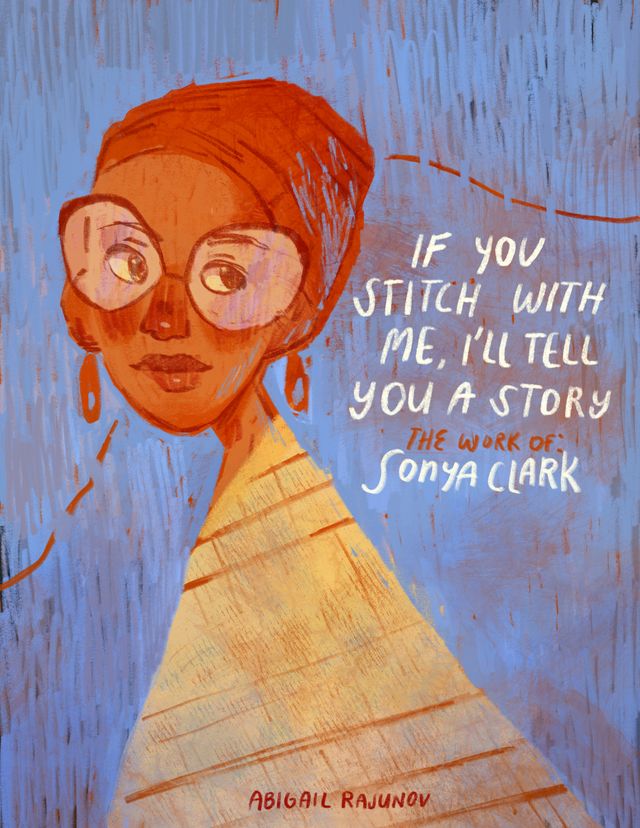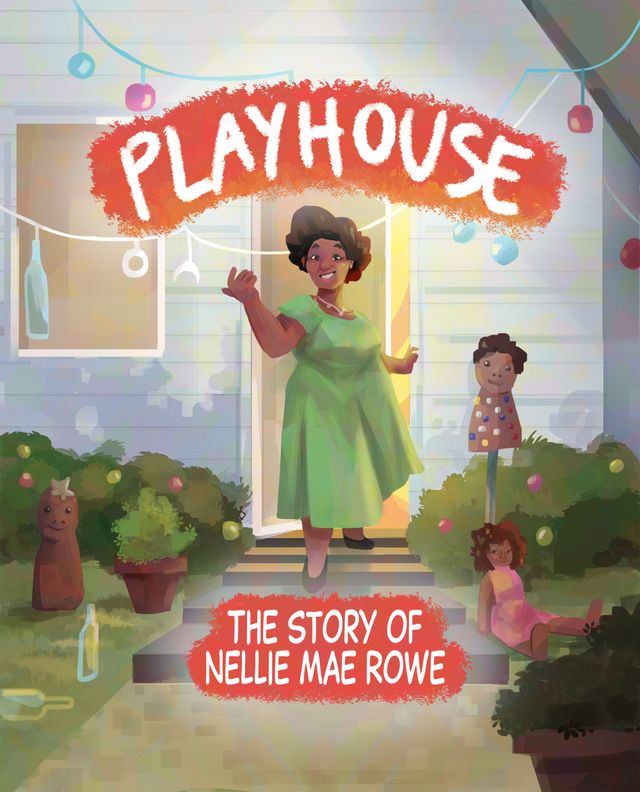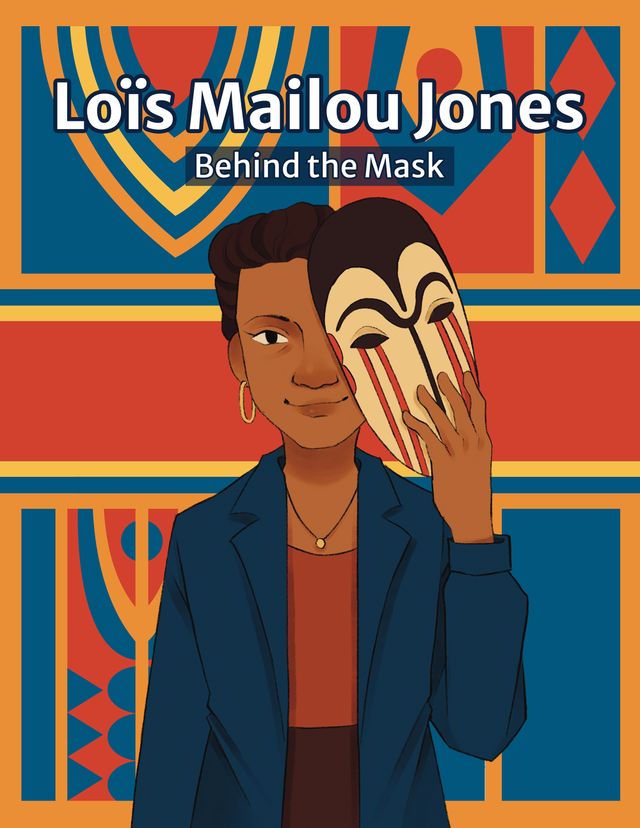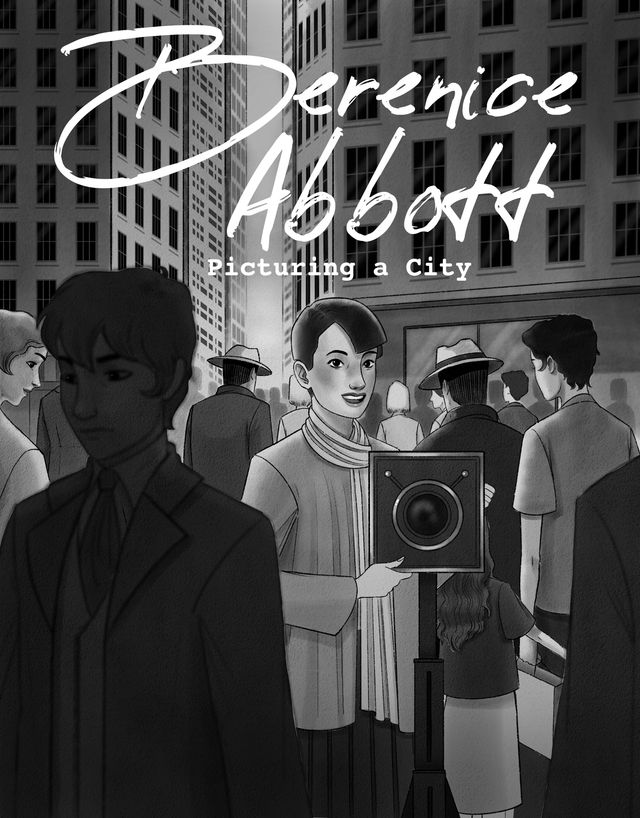An Overview
Sarah Goodridge grew up on her family's farm, where she created her earliest pictures using a pin and birch bark, before moving to Boston. With her passion and hard work, she became one of the first American women to earn a living as a working artist.
This comic is part of a series Drawn to Art: Tales of Inspiring Women Artists that illuminates the stories of women artists in the collection of the Smithsonian American Art Museum. Inspired by graphic novels, these short takes on artists’ lives were each drawn by a student-illustrator from the Ringling College of Art and Design.

A lavender- blue border surrounds the cover. Each corner contains a miniature portrait of Sarah Goodridge, one as a child and one as an adult. Inside the decorative frame is an illustration of Sarah’s elderly hands holding a palm-sized portrait of her younger self. The painting depicts her with a brown, curly updo, brown eyes, a gentle smile, and a pillowy, green coat. There are two text boxes; the text at the top reads “Sarah Goodridge,” while the text at the bottom says “A life in Miniatures.”
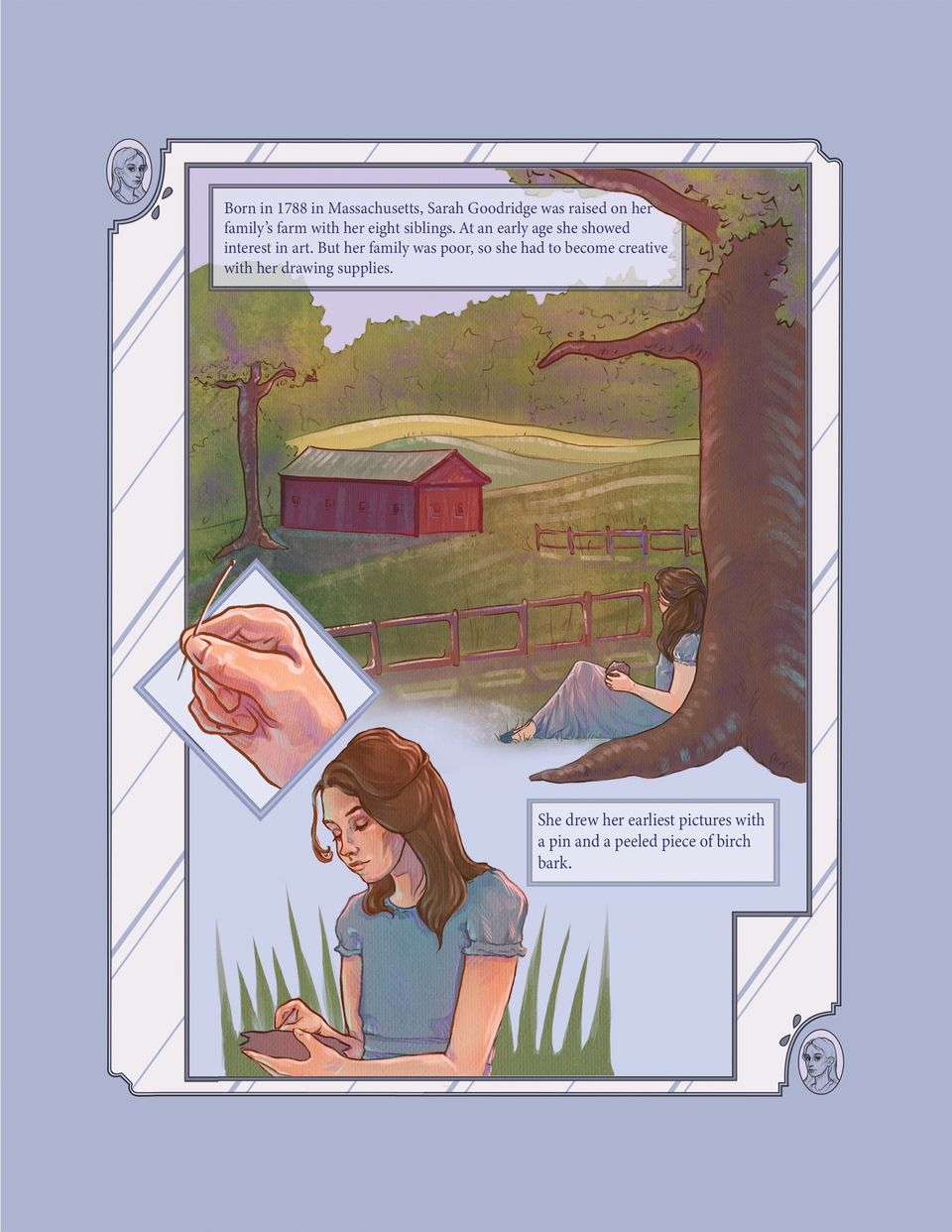
Each page of this comic is surrounded by lavender- blue border and a striped baby blue pattern behind the panels. The first page begins with text that reads, “Born in 1788 in Massachusetts, Sarah Goodridge was raised on her family’s farm with her eight siblings. At an early age, she showed interest in art. But her family was poor, so she had to become creative with her drawing supplies.” Sarah Goodridge sits alone on the right, just beneath a sturdy tree. She’s wearing a baby blue dress with puffy sleeves which fades to a subtle purple as the sun hits it. Her left-hand holds a piece of tree bark. Sarah’s half-up, half-down hairstyle frames her face; its length stops past her shoulders. In the distance is her family’s small farm, a tiny red rectangular shack protected by a few wooden fences. There are green hills all around, encapsulated by a crowded forest.
A diamond-shaped panel on the left shows a close-up of Sarah’s hand, holding a tiny metal pin. A close-up of Sarah at work is below that panel. She sits on the grass, chipping away at the bark. The text on the right reads, “She drew her earliest pictures with a pin and peeled piece of birch bark.”

A large stack of earth-toned suitcases—greens, browns, and blue-- stands tall on the left. Beside it, the text reads, “At 17, Sarah moved to Milton, a city closer to Boston, to help her brother raise his family. She continued to paint, usually in chalk, watercolor, and oil, before focusing on miniatures.” There is a profile view of Sarah in the center. She’s monochromatic and holds one of her suitcases by her side. She’s looking off into the distance with her head up, expressionless. Behind her is a skyline of Milton with buildings of various height, some with steeples, colored in dark blue. The text box continues, “She painted on canvases no bigger than three or four inches tall.” Below the suitcases, the text reads, “In 1818, in the Boston City Directory, she listed herself as a miniature painter.” A sequence of collages scatters to the bottom of the page. Sarah sits at a table (which is not shown), wearing a brown Empire-style dress with three-quarter length sleeves, focusing on a miniature painting. Her right-hand rests on her chin as she paints. To the left are jars storing a few paintbrushes and a pair of scissors. In a collage style, a stack of papers overlays the jars of paint brushes; the pages are titled “Boston City Directory” with fine text that says, “Name: Sarah Goodridge. Occupancy: Miniature Painter.” Below is more text, which reads. “In Boston in 1820, Sarah opened her own studio and became one of the most proficient miniature painters in the city for the next 30 years. The final panel is a three-quarter view of Sarah, who looks off to three colorful brownstone homes; green, blue, and red. The red building has a “sold” sign in front of it. Sarah is wearing a green coat and a green headband.

Page 3 opens with text that says, “Later that year, Gilbert Stuart, a prolific American portrait painter, came to her studio. Gilbert was impressed with Sarah’s talents and became her mentor.” On the left is an illustration of Sarah from the waist up. Her head is turned away to face a door on the right. Sarah’s hair is short brown, slightly darker than her long-sleeve brown dress. Her left-hand rests gently on her right while she listens to a knock from the door behind her. The center of the panel has large dark blue text exclaiming, “Knock knock”! Emerging from the doorframe is Gilbert Stuart, a distinguished older gentleman. As he walks through the door to greet Sarah, he takes off his green top hat as a gesture of respect. He’s wearing a brown tailcoat jacket, with the sleeve on his right arm rolled up to his elbow, a green ruffled collar shirt, simple blue-gray trousers, and brown shoes. The final panel at the bottom is an exchange between Sarah and Gilbert. Gilbert is on the left, smiling down at Sarah, who holds a palm-sized gift for him. The text reads, “It’s the most lifelike thing ever painted of me in this country. It’s the only true likeness of me.” A text box on the bottom right continues, “He presented it to his mother, adorned with a bracelet woven from his and his wife’s hair.”

A large navy-blue text box in the shape of a ribbon takes up one-third of the page. The text inside says, “Sarah was hired and paid as an artist to paint senator Daniel Webster, General Henry Lee, and other notable figures. She often completed as many as three portraits a week. She loved to paint children, friends, and prominent members of Boston society. Most of her miniatures were done in watercolor on ivory. Between 1827 and 1835, she had five exhibitions at the Boston Athenaeum”. Dangling from the right corner of the page is an example of one of Sarah’s miniature paintings. It’s safely secured in a golden locket with a long gold chain. The painting inside the locket is a portrait of a young woman in a green dress. Towards the bottom of the page, Sarah stands with a paintbrush in hand. She’s wearing a green coat and a long purple skirt. She softly smiles, proud of her accomplishments. Beside her is a spot illustration of an intricate black box with a pearl necklace draped over it and a miniature portrait inside— a man with a reddish-brown coat, shaggy blonde hair, and green background.
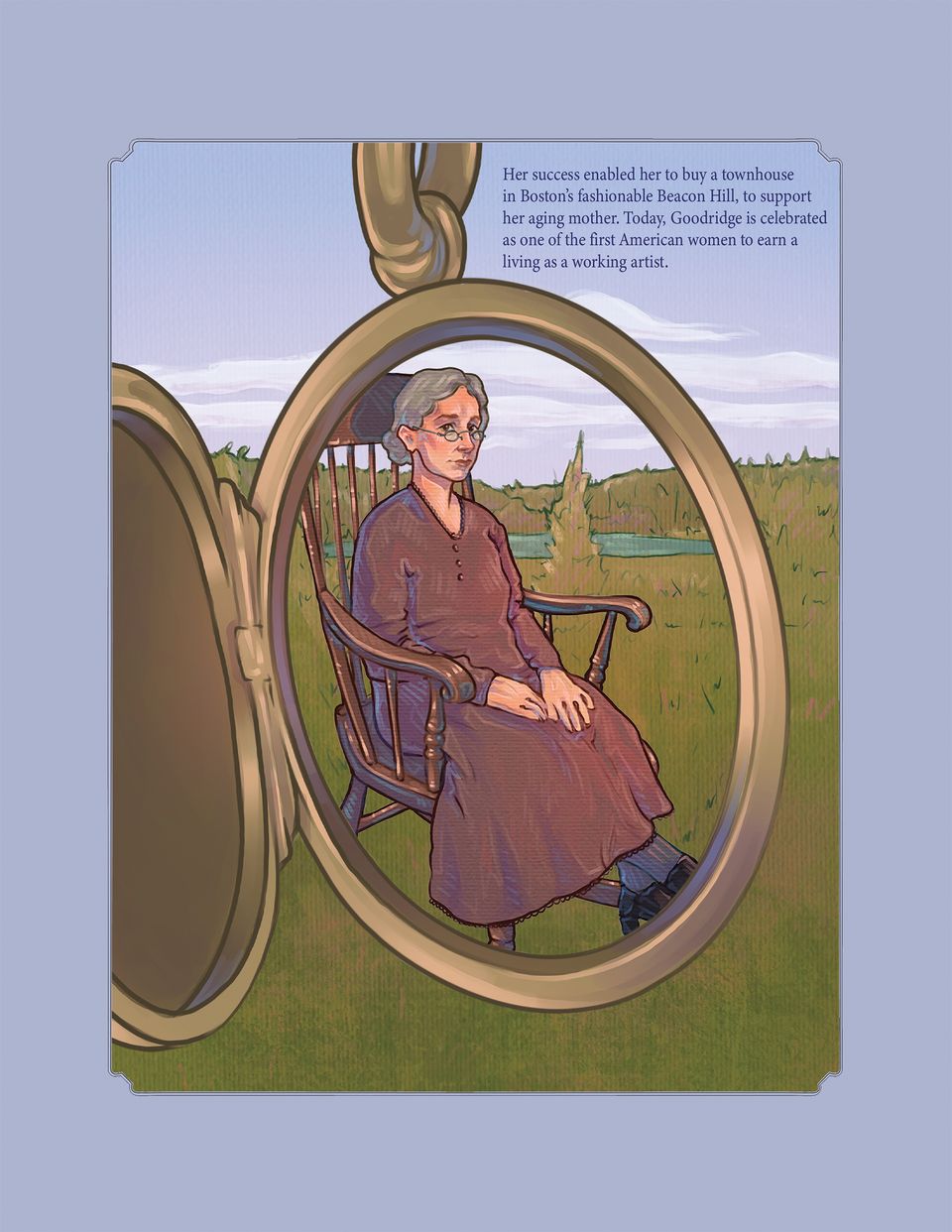
The final page opens with text: "Her success enabled her to buy a townhouse in Boston’s fashionable Beacon Hill, to support her aging mother. Today, Goodridge is celebrated as one of the first American woman to earn a living as a working artist.” A locket dangles closely to the viewer, creating a large framing device for the illustration. Inside the locket frame is an elderly Sarah Goodridge on a rocking chair. She has short, gray hair, thin-wired glasses, a long brown dress, bluish-gray socks, and black heeled shoes. Her hands rest comfortably in her lap, and a beautiful lush green landscape is behind her. The sky is a soft blue and pinkish-purple with gentle wispy clouds.

The final page has a miniature locket painting in the center. It’s a painting of the illustrator of the comic, Susie O'Connor. She is white with long, dark brown hair, wide round eyes, a slightly upturned nose, and a navy blue shirt. The locket’s frame is dark green, which matches Susie’s eyes. The background is a light blue with baby blue diagonal stripes. Below is a text box that says, “Illustrated by Susie O’Connor.”















